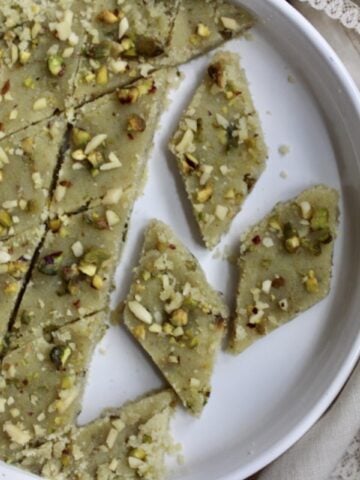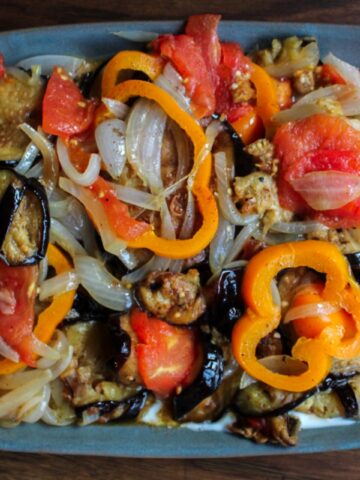Afghanistan Country Introduction and Recipes
Influence
Being a landlocked country, Afghan food retains influence from many of its surrounding countries (Iran, Turkmenistan, Uzbekistan, Pakistan, Tajikistan, and India). Persian and Arabic cultures project influence through spices such as cumin, mint, dill, and cardamom, while Garam Masala (a fragrant spice mix with cinnamon, cardamom, cloves, cumin, and nutmeg) shows influence from Pakistan and India. Mongolia has influenced many of Afghanistan’s noodle-type dishes, such as Aush.
Flavors
Coriander (cilantro) is the most popular herb used in Afghan cooking… it’s so common that many even call it the parsley of Afghanistan! Maust, or yogurt, commonly tops vegetables or meat dishes. It can also be drained to make a thick substance similar to cream cheese called chakah. Rice dishes such as chalau and palau are served at almost every meal and are typically made using long-grain white rice such as basmati.
Common meats include beef, lamb, poultry, goat, or camel. These meats are very tough, so it is not uncommon to grind meat before using it in recipes. The Islamic influence in Afghanistan forbids Afghans from eating pork. According to Tess Mallos of The Complete Middle Eastern Cookbook, “Afghans like their foods to be oily, either from the lamb fat or from the use of rather large amounts of vegetable oil or ghee.” Many of the recipes below have been edited to accommodate the western taste, so the amount of oil has been reduced.
Nan (bread) is an enormous part of the Afghan cuisine. Afghans treat nan with the utmost respect, due both to religious reasons (God provides bread as a gift) as well as respecting food during times of shortage. According to Hafizullah Emadi, the author of Culture and Customs of Afghanistan, “No person, regardless of ethnic group or income level, could imagine a day without nan.” Nan is so well-respected that dropping it on the ground is considered an etiquette faux-pas.
Chai tea is a popular drink in Afghanistan. Afghans typically enjoy their tea served black, sometimes with cardamom. When Afghans entertain guests, they usually serve tea with sugar in order to spoil their friends. The more sugar in your tea, the more esteemed you are as a guest.
Food Culture
Afghans emphasize hospitality greatly. In addition to the pure enjoyment of food, mealtime gatherings can celebrate closed business deals or resolved disputes. When hosts invite guests to the dinner table, they always prepare are elaborate meal with many dishes. Oftentimes, guests bring additional guests and hosts do not know how many people to expect. As a result, hosts usually prepare food for around three times the amount of expected people!
Dining Style
Platters and pots galore pile high on a carpet or mat in Afghan homes, and guests sit on a cushion surrounding the food. Diners eat food with the fingers or with bread. Featured dishes usually include vegetables, salad, pickles, yogurt, fresh fruit (such as grapes, melons, apricots, mulberries, cherries, apples, and plums), and bread. For beverages, dug (a yogurt drink) or murgh (buttermilk) are served in glasses. Desserts such as pastries follow the meal, and then generous glasses of chai tea end the event.
My Cooking Experience
I’ve been reading about Afghanistan for months. I’ve spent hours choosing the most delicious meals to make, spent WAY too much money on props for photographs, and researched the crap out of the spices and techniques I’ll be using. Finally, today is the day. Today I start cooking!
Even my aunt and cousin are coming over for the dinner party to help kick off the start of this new adventure.
I said that dinner would be served at 7, but it’s 7:30, and I haven’t even started frying my leek pastries for appetizers yet. I’ve been cooking since 11 am (and I prepped for 3 hours yesterday). I’ve burned myself, cut my finger, and already done 4 rounds of dirty dishes.
Finally, I drop my hand-rolled leek beauties into the bubbling oil and whip up a quick yogurt dipping sauce. As we sit down at the table, with mounds of rice, platters of vegetables, and trays of bread in front of us, I breathe a sigh of relief. Ah, dinner is served.
And then I realize everyone is staring at me.
We’re supposed to eat with our hands—like they do in Afghanistan— and they’re waiting for me to make the first move.
“Well…” I say hesitantly, “let’s eat!” As I say it, I use my naan bread to pick up a huge scoop of kabuli pulao and pop it in my mouth.
And holy moly, it is delicious (if I do say so myself).
As we eat our meal, no one can stop talking about how delicious the vegetables are, how flavorful the rice is, and how fun we are having eating with our fingers.
It seems to me like my first meal is a success!
On the Menu
- Nan (Bread)
- Kabuli Pulao (Spiced Lamb Pilaf)
- Bouranee Baunjaun with Chakah (Eggplant with Yogurt Sauce)
- Garam Masala (Fragrant Spice Mix)
- Halwau-E Aurd-E Sujee (Semolina Sweetmeat for dessert)
Click on the links above to read about each dish I made and how it went!






